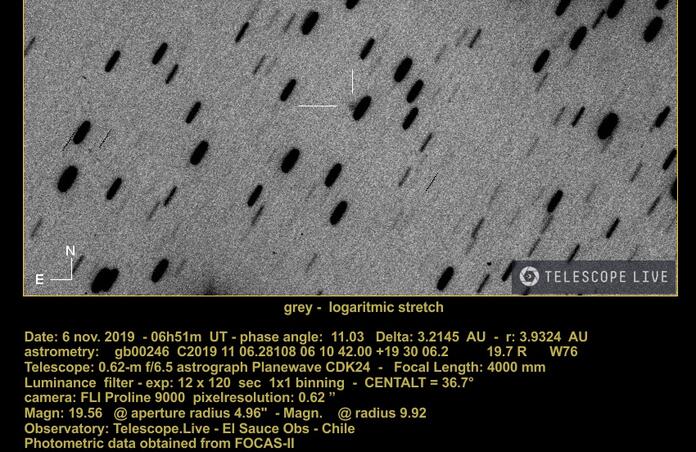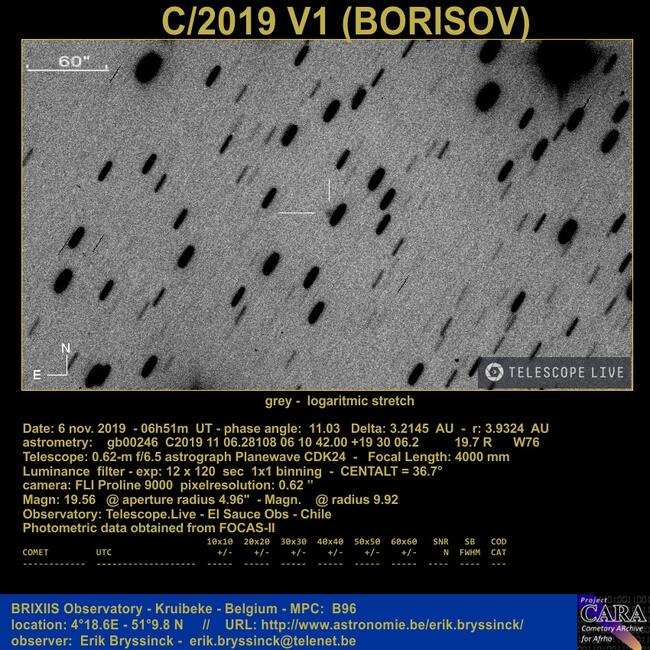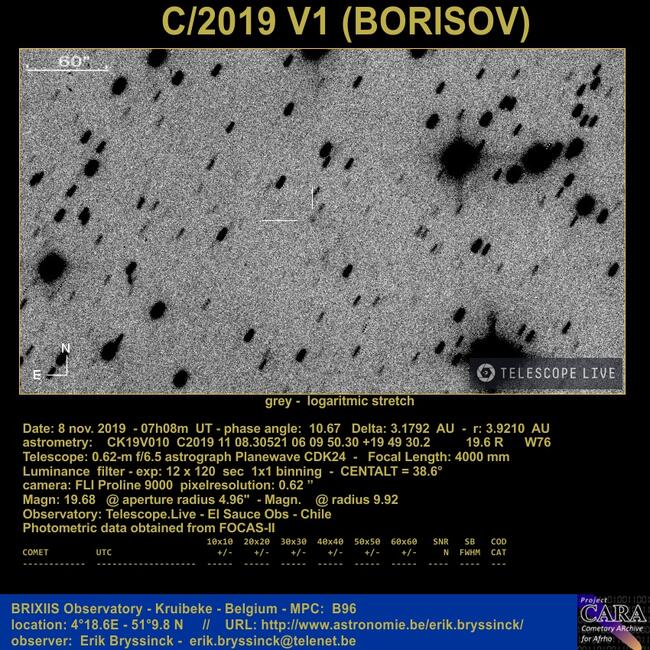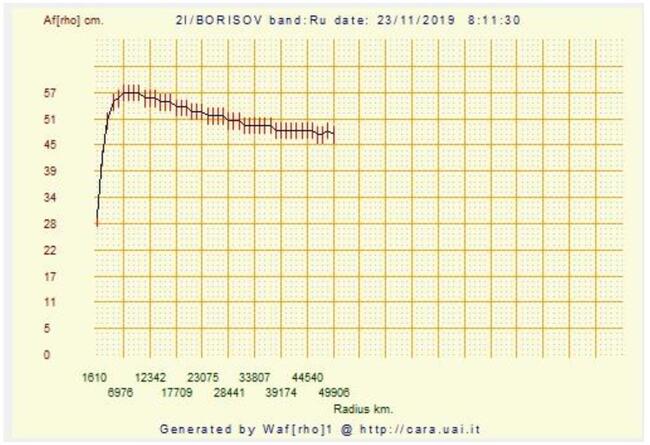Chasing Comets with the Telescope Live Global Network

My name is Erik Bryssinck and I am a Belgian amateur astronomer who focuses mainly on observing comets, not directly for the beautiful picture but for data with more scientific meaning. My passion started (at a rather late age) in 1999 with the solar eclipse. I am now a member of the VVS (Flemish Astronomy Society), VSRUG (VolksSterrenwacht RijksUniversiteit Gent), CARA (Italian Cometary Archive for Af(rho)) and BAA (British Astronomical Association).
I participate in certain ground-based observation projects such as Deep Impact, EPOXI, ROSETTA and other projects where I get the opportunity to work with both amateurs and professional astronomers. Occasionally I make observations for the MPC (Minor Planet Center) to observe possible comets that have yet to be fully identified. These possible comets are mentioned on the PCCP list on the MPC database.
Besides my own backyard observatory, I also use remote telescopes to obtain data from these comets. The data I use is astrometry, photometry, and af(rho) parameter. It is therefore important to try to observe these comets on a daily basis. Remote telescopes are the solution as the weather does not always allow for home observation, and especially because certain comets are not always observable in the northern hemisphere. Telescope Live is very suitable for this task since there are several observatories placed around the globe with beautiful instruments and, most importantly, on a site with no light pollution!
Chasing comets with the Telescope Live global network
I have recently observed comet C/2019 V1 (BORISOV) with the CDK24 Planewave in Chile, which was not yet named as a comet at that time. Two days later, using the data I gathered using Telescope Live it was assigned as comet C/2019 V1 (BORISOV). A second image was taken again with the Telescope Live CHI-1 instrument of the same object to confirm its assignment.
This beautiful instrument is very suitable for this task (and also for obtaining all the data it needs), this telescope also has the Sloan R-filter to obtain the Af(rho) parameter according to CARA-approach and a pixel resolution of 0.62 arcsec. This combined with the large aperture of 61 cm makes it a perfect telescope for comet observations.


Working with the data
In order to obtain the desired data, I follow a well-defined procedure. For some projects, I take images of the comet with or without the Luminance filter and the R-photometric filter. The exposure time is determined by the expected magnitude and the speed at which the comet moves through the universe. After all, the comet must not overexpose. The advantage of a large-diameter telescope such as the CHI-1 telescope from Telescope Live is immediately apparent.
After the classic calibration with Dark/BIAS/Flat automatically provided by Telescope Live, the images (with L-filter) are processed by the software 'Astrometrica' by Herbert Raab. I then use the FOCAS-II software to obtain the photometric data. These two software packages contain a tool to send the data directly to the respective 'MPC' and 'Cometas Observadores' databases.
I use the images taken with the SLOAN r' photometric filter to calculate the Af(rho) parameter with CARA's WinAfrho software. Here, too, there is a handy tool to send the data directly to the CARA database via the software. The Af(rho)parameter, expressed in cm, is calculated using the distance to the core (in km). All this data is then available for further studies by professional astronomers.
Below is an example of the Af(rho) parameter of the interstellar comet 2I/BORISOV, images obtained with Telescope Live CHI-1 telescope (CDK24 Planewave)

An outlook to the future
Apart from future projects and demand for observations via mailing lists and Facebook, comets are simply very unpredictable in their behavior due the occurrence of jets, changes in the coma, sudden clarifications or weakening of the activity, possible splitting of the core into one or more fragments and formation of dust and gas comet tails, which can also produce beautiful pictures and remain worth observing.
This is the interesting thing about observing comets, you never know what will follow and comets are simply unpredictable!
